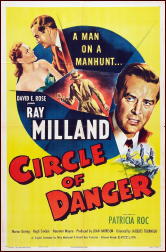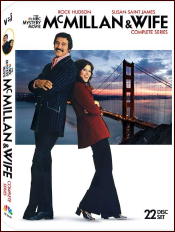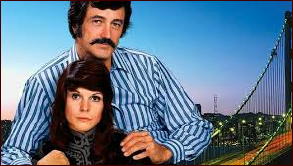Thu 26 Feb 2015
It took a couple of weeks after I posted a review of The Red-Light Victim (Tower, 1981), a paperback original by Lawrence Kinsley, to track the author down, thanks to Google and the assistance of Mark Nevins, a mutual friend.
You probably should go read (or re-read) the review again, before continuing. Here’s the link. I’ll reuse the cover image that I used then, but you’ll probably find it helpful to go back to read what I had to say about the book before reading Larry’s own comments on it. What I will tell you here, though, is that it’s a private eye novel, the PI in this case being Boston-based Jason O’Neil. In the background is the anti-nuclear movement of the early 1980s.
This interview consists of a long comment that Larry left on that earlier blog post, somewhat edited to fit an interview-type format, along with his answers to a few additional questions I asked him.
Steve (SL): I’m glad I was able to get in touch with you, and of course it’s good that you’re still around to be gotten in touch with. Can you tell us something about the book, your reaction to the cover, and how it happened that a second book never happened?
Larry (LK): No, the nukes haven’t gotten me yet! Larry Kinsley is still alive, and am the author of The Red-Light Victim, though I had nothing to do with the cover pic! – that was strictly Tower Pub, which I doubt ever even fully read the book! In fact, I pretty much had an agreement with a scientific group named the Union of Concerned Scientists to review and publicize the book when it came out, but as soon as they saw the cover the agreement vaporized.
Don’t know how much anyone would be interested in my subsequent tale of woe concerning the book. Suffice it to say that after I sold a second Jason O’Neill detective novel to Tower Pub, The Salem Cult, a year later, they went out of business three months before that book’s fall 1982 release date. Worse, they literally stole away in the middle of the night from their Park Avenue offices, taking all of my royalties from Red-Light with them! These included sales of the book to at least three different European countries, with translations, what Tower had previously told me was unprecedented for one of their mystery/detective books.
As my writing career up to then had netted me approximately eighht cents an hour, and as at the same time my agent retired suddenly and I couldn’t re-market the second O’Neil book since Tower had already paid for a 15 year copyright, I decided at that time, aided by a sudden move out of the Boston area to Florida because of a work offer in the video retail business, to put my career on hold.
Red-Light had been up for an Edgar as best first mystery novel, but didn’t win, I was told by Mystery Ink’s librarian, because Tower did nothing to push the book. Although I had other O’Neill books outlined, I simply for a number of reasons both financial and personal couldn’t continue at that time. Little did I know that my hiatus would last well over 30 years!
SL: What have you been doing in the past 30 years?
LK: I have recently retired from the retail business and am back in the writing game, though of course O’Neill himself is vastly out of date – in fact he took up residence in the retirement home for old detectives some time ago – but I do have an historical novel and a WWII spy novel in the pipeline, though no agent as of yet.
I also spent several years writing a non-fiction book on the architect Frank Lloyd Wright’s campus of buildings at Florida Southern College near where I currently live, which is currently being looked at – no decision yet – by the History Press.
SL: Thanks for all information about The Red-Light Victim and what you’ve been doing since it was published. Do you now own the rights to the book? You mentioned that Tower had a 15 year long contract for the copyright, but that’s long past. And in that regard, have you considered finding a publisher specializing in reprinting oldout-of-print mysteries? There are quite a few actively putting out books today.
LK: You’re very welcome. I’m always interested in letting the reading public know something of the behind the scenes writing game.
I don’t know much about publishers interested in publishing out of date mysteries – mine was so topical I really didn’t think about a re-release over 30 years later. Maybe by now enough people have come along who thing that the China Syndrome is a casual drug that there might be some re-interest in the topic. (In 1982 I was actually in the middle of negotiating a five-figure deal with a Hollywood producer to sell the screen rights to the book to him when China Syndrome screened, and the deal fell thru.)
I do own the rights since Tower had only a 15 year window, even if with the failure to pay royalties they had even that, and when the book was published a couple of lines was left out of one chapter which has always nagged me. In fact I have computerized the novel, making a few improvements mainly in the grammar and syntax, so I suppose I could try to market it again.
I am juggling a couple of other books now, so I will see, but thanks for the suggestion. I also have the second novel in the O’Neill series on the computer now, and may make an attempt with that at some time, though it’s probably even a bit more time sensitive than Red-Light and may not be publishable.
SL: Have you been keeping up with the mystery field in recent years?
LK: Other than rereading Chandler and Hammett, I must confess that I have pretty much put mystery reading as well as writing in the rearview mirror. My current knowledge of the detective/mystery field is severely limited.
SL: Thanks for taking the time to talk with me this way, and for agreeing to have our discussion put online.
LK: I certainly appreciate your interest. Basically I’m just an old gumshoe geezer now whose 15 minutes of near fame has long come and gone, and is probably wasting his time trying finally to get 15 more. But what the heck, I can still breathe, and a writer is usually a writer until his last breath!



